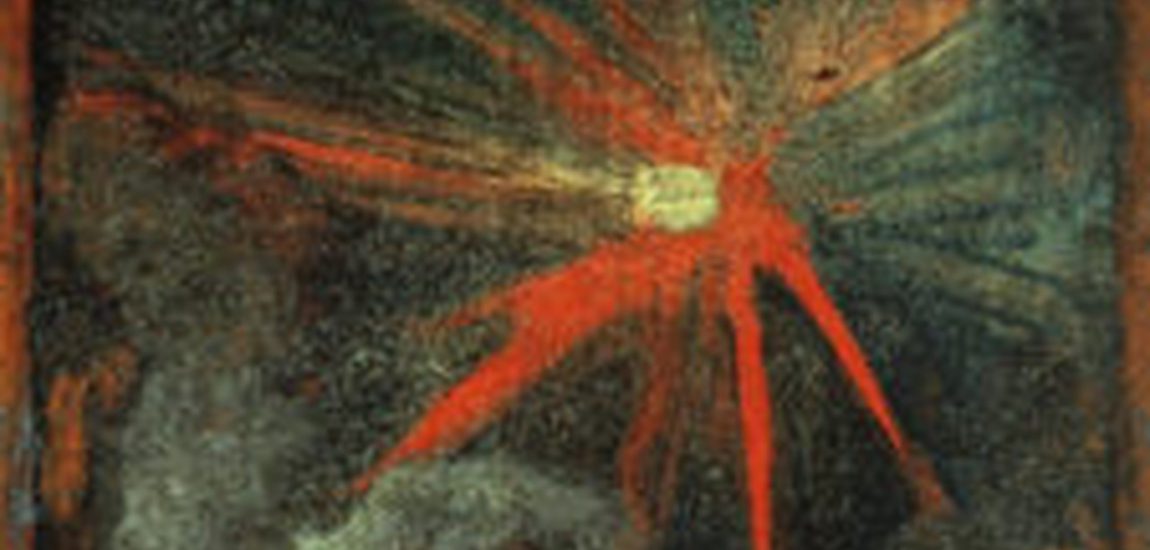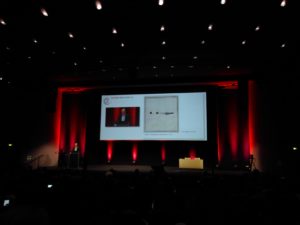
Is it a thunderstone? Is it a pallasite? No – it is Goldschmidt 2017!

It’s official – Goldschmidt 2017 has kicked off! After a convivial, ice-breaking party yesterday night, things got serious this morning, with a myriad of sessions well on their way. At 11:45 then the brief opening ceremony: the organising comittee explained to the community that there were a total of 7100 litres of coffee to be had, and that a combined 12,800 hours of beer-drinking were to tackle in the upcoming week, alongside 2255 talks and 2278 posters. Then, Bernard Marty presented Eiji Ohtani, Bo Thamdrup and Julie Prytulak with their well-earned medals for outstanding scientific contributions to the world of geochemistry.
The audience had barely stopped applauding when the first plenary talk started with a bang: Matthieu Gounelle from the Muséum National d’Histoire Naturelle led us through the history of meteorites, and it turned out to actually be a history of the western world as well. Gounelle, professor and curator of meteorites at the MNHM, explained how meteorite falls through the centuries provoked wildly diverging reactions and interpretations from contemporary civilisation:
In the Rennaissance, the 1492 fall of the “thunderstone” of Ensisheim (France) got instrumentalised as a mystical propaganda tool for King Maximilian of the Holy Roman Empire to go to war against France (the fall was interpreted by self-appointed prodigies as a good omen), and was an exceedingly popular topic in the nascent world of tabloids. In the 1600s the need for prodigies waned and was replaced by a more scientific approach to describing and interpreting nature. Since stones falling from the sky were quite difficult to explain, they were largely ignored, and meteorites were part of curiosity cabinets at best. More meteorite falls in the 18th century made it increasingly difficult to ignore them, but in the absence of a good scientific explanation, they turned into “shameful ghosts” that posed a problem to scholars and politics in equal measure: As scientists discarded the possibility of extraterrestrial material falling onto the Earth, anyone who reported a meteorite fall was dubious and by default non-enlightened. This problem was only overcome at the turn of the 18th century, when brave scientists gathered increasing evidence for the extraterrestrial nature of meteorites, followed by a meteorite fall that was officially confirmed under Napoleon Bonaparte in 1803.
Gounelle’s concluding remarks are a good reminder for every scientist: Meteorites just kept falling throughout the centuries – but what really makes the history of meteorites is their reception by mankind. Meteorites evolved from metaphysical objects to collectibles to scientific objects, changing with the overarching mindsets of society during the epochs, and all of these interpretations were valid. What we find is determined by the questions we ask, and as the questions change, so do the answers. And while we are – in all likelihood – closer to “the truth” about meteorites now than 500 years ago, there is still so much more to discover, so many more questions to ask that we don’t even know about yet. (Of course this is just my reception of Gounelle’s concluding remarks based on my mindset.)
And on this philosophical note I will end this report on the first morning of Goldschmidt 2017. Back to science, before Goldschmidt Rocks tonight!
